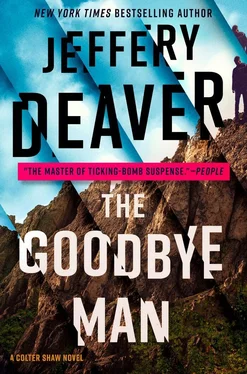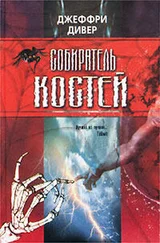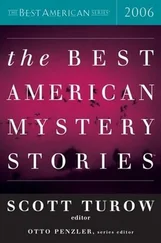“I borrow my test from a book by Margaret Singer and Janja Lalich, Cults in Our Midst. For them, a cult, one, controls the environment of the followers; two, has a system of rewards and punishments; three, creates a sense of powerlessness among the followers; four, uses fear for control; five, promotes dependency on the leader or cult; and, six, has a mission to reform followers’ behaviors.
“There’s another element too: nearly every cult is headed by a single controlling leader. He — it’s usually a man — has a consuming ego, attacks his enemies, lashes out in anger, has an absolute belief that he’s correct, won’t listen to advice or criticism, is paranoid and craves worship and adulation.”
DeStefano’s eyes cut left to the second computer. “This Osiris Foundation?” She shrugged. “Can’t really say without more information. It seems to fall into the category of a personal improvement and transformational cult — the least harmful. Usually the followers are people who’re sick of their jobs or can’t find satisfactory romance. The leaders’ll use hypnosis, meditation, dream study and encounter sessions to change your outlook on life. The lack of a social media presence is troubling, though. Are they hiding anything?”
“You mentioned categories of cults. What would those be?”
DeStefano stretched back. “The majority are religious, drawing on traditional sects, hybrids or made up out of whole cloth. Then the political ones — we can thank 8chan and the internet for most of those. There are business-oriented cults that suck in members for get-rich-quick schemes. Then the really bad ones: racist, like the KKK or Aryan Nations. Militant separatists. White supremacists. Psychopathological cults — Charles Manson, for instance. Black magic. Satan worship, animal and human sacrifice. There are more of these than you’d think.”
The deprogrammer leaned forward and eyed Shaw. “Can I ask why you’re interested?”
He told DeStefano about the murder of the journalist Gary Yang and the likelihood that the killer had been a member of the Foundation.
This drew a frown. “Yang wrote an exposé on it?”
“Not really. It was just one reference to the Foundation. But the piece suggested that the group might be a cult. Yang was killed a week after the article ran — by someone who probably had been a member.”
“So the killer either wanted to get revenge for what Yang wrote, or he was afraid that Yang might be planning to write more, maybe revealing some secrets.”
“I was thinking that.”
DeStefano thought for a moment. “There’s a phenomenon in all organizations called the isolated negative. Let’s take a benevolent group whose purpose is to help people, Transcendental Meditation, for instance. Something like that. The leader or teacher’s not on any power trips, truly wants to better people’s lives. There’s no abuse, the fees are reasonable, its programs are uplifting and positive and effective. No control. You meet every Tuesday night and go out for cocoa after.
“But the group exists to help people who, to a greater or lesser degree, are troubled — otherwise, they wouldn’t be there in the first place. Right? That means the membership contains a higher percentage of individuals more likely to act out, sometimes violently. That goes against the entire purpose of the cult but they don’t care. Those individuals are ‘isolated negatives.’ I’ve seen them in completely harmless organizations. They’re fine... until they snap and assault and sometimes kill fellow followers or outsiders.”
“There was another death involving a member. He killed himself.”
Her brow furrowed at this news. “Do you know why?”
“History of depression. Lost his mother recently. He was about to be arrested, though I think the charges would have been dropped. He should’ve known that. Still, he took his own life.”
“Some cults — especially the transformational ones like this Osiris outfit seems to be — can be tough on the unstable. Encounter sessions can amount to institutionalized bullying.”
That word resonated. He explained about the treatment of the brunette by the driver of the van.
The woman was silent for a moment. “Mr. Shaw, I get your concern. But, my two cents: there’s something that happens when people fall under someone’s spell. Jim Jones convinced over nine hundred followers in his Peoples Temple to murder hundreds of children and then kill themselves with poisoned fruit punch — not Kool-Aid by the way, another brand. Up until 9/11, it was the largest civilian loss of American life in a single non-natural event.
“Charles Manson told four of his followers to slaughter complete strangers in the most gruesome way they could and they didn’t blink twice before doing just what he asked. David Koresh, founder of the Branch Davidians, convinced his followers to battle it out with the FBI. Seventy-five people died. Warren Jeffs was the head of a fundamentalist Mormon cult. They believed in polygamy and marrying children as young as twelve. He had eighty-seven wives. He’s now in jail for life.
“Cults brainwash. There’s another name for brainwashing: menticide. Murder of the mind and the personality.” A wave at the offstage computer to her left. “This Process that the Osiris Foundation talks about might’ve turned its members violent or even homicidal. Even if it’s beneficial on its face, it could still be home to dangerous isolated negatives.
“I haven’t even touched on the hundreds of anti-cult organizations out there. They attack cults, the cults attack back. And cults fight one another, competing cults. It’s a running battle, often physically dangerous.
“So, Mr. Shaw, the situation is filled with risk.” DeStefano lifted her hands. “My advice is this: if you don’t have a personal stake, just stay away. I mean it. Far away.”
Two: The Best Is Yet to Come
Colter Shaw was driving the pickup truck along a gravel drive, past a modest sign, purple type on a white background:
∞
THE OSIRIS FOUNDATION
Shaw continued toward the main entrance, through a narrow gap in a rock formation that was fifty feet high. It reminded him of a scene in a series he’d read and reread as a boy: The Lord of the Rings . The image that had come to mind was the forbidding entrance to some ancient kingdom. Shaw noted that a rockslide here — at the hand of nature or man — would effectively block the only way into and out of the Foundation by vehicle. He had pored over maps of the area; no other roads, not even old logging trails, serviced the Foundation’s camp.
Once through the rock wall he saw ahead of him a six-foot-high chain-link fence. He drove to the guardhouse beside the motorized gate. The shack was about ten feet by ten feet. A chimney protruded, which told Shaw the gate was manned constantly, whatever the hour; evenings would be chilly in this mountain valley, even in the summer. He recalled that the Foundation camp was closed in the fall and winter. Harbinger Road would be impassable for much of the colder months.
A solidly built man in black slacks and an odd gray shirt — a tunic that reached to mid-thigh — stepped up to Shaw’s window. He wore the curly earbud of security people and TV talking heads, and a walkie-talkie rode on his hip. Out of instinct, Shaw scanned the uniform, if that’s what it was, but could see no outline of a weapon because of the loose cut of the cloth. On the man’s chest was a tag that read ASSISTANCE UNIT.
“Afternoon.” The man offered an easy smile.
“Hi,” Shaw said. “I have an appointment.”
“Name?”
“Carter Skye.”
Читать дальше








![Джеффри Дивер - Where the Evidence Lies [A Lincoln Rhyme Short Story]](/books/403782/dzheffri-diver-where-the-evidence-lies-a-lincoln-r-thumb.webp)



